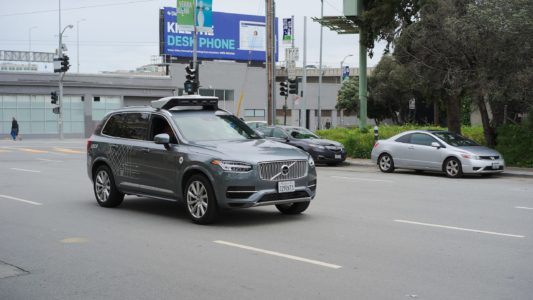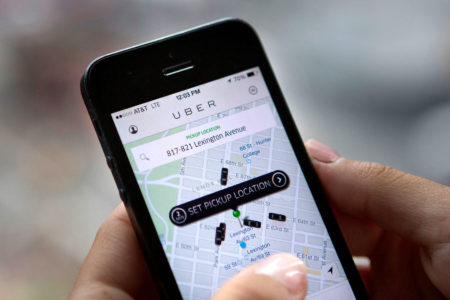If you’ve paid any attention to the taxi and transportation world over the course of the past decade or so, you will have realized that traditional taxi companies simply aren’t that profitable anymore. By now, the market has been taken over by companies like Uber and Lyft, and their main benefit is sheer convenience.
Of course, if you want to get into this market, you’ll have to compete with the giants who created it in the first place, and that will be no easy task. There are a few steps in the process to becoming the next Uber, and it isn’t as simple as you may think. Today, we’ll be looking at Uber-like app development.
 Have a Clear Goal Set from the Start
Have a Clear Goal Set from the Start
One of the most critical things that you can do when setting out to develop an app, not just one that is meant to compete with Uber, is that you will need to have a vision. You’ll have to be a little more specialized and offer something different than the companies that are already on the market.
You can have the most excellent execution when it comes to building your app, but if your idea doesn’t attract customers in the first place, then you’ll likely have a harder time growing your business. Don’t be afraid to scrap plans early on in the process, and keep your thoughts fluid.
Decide on the Development Process
You have a few different options available when it comes to how you’re going to develop your application, and it can range from pre-existing employees to companies dedicated to making apps. In the end, you will have to consider how much you will be willing to pay to get this app started.
Uber-like app development isn’t that cheap, and you may want to save money wherever it is possible, so it would help immensely to already have a team of developers that you can rely on. Of course, the quality of your development will greatly affect the experience of the end user, so it is critical.
 Geolocation Features
Geolocation Features
Uber has a GPS feature to customers find their current position, help the driver find the best route to their user’s location. The fare is calculated based on the relative location and the proposed routing.
In fact, GPS and routing technology are the best elements of Uber’s popularity among their users – you can press a button and view the driver approaching you. Make sure to implement this feature in your app so that your users are able to utilize the app and get detailed information about their destination.
Payment Integration
One of Uber’s main selling points has been its in-app payment feature, which prevents users from getting overcharged by their drivers. Also, users can obtain a pre-ride estimate on how much their taxi ride will be. This allows them to view the price of the ride and decide if they want to take it or not.
This dynamic pricing feature is based on the car’s availability (add-on fares for peak hours and discounts) and the traffic situation. Uber’s app takes these four factors before making an account quote: base fare, safe rides fare, cost per minute, cost per km/mile.
To increase prices or not? Decide if you want to use dynamic pricing based on the traffic situation and the current demand. While some of your users won’t mind paying more for a ride, other users will feel like they’re being taken advantage of.
For instance, this dynamic pricing model is used in large companies including, hotel booking websites, Airbnb, and other providers who give their service to a limited amount of people. While scarcity is a huge factor in driving demand, some of your customers might not like that approach.
To give in-app payments, you’ll have to choose the best payment gateway integration. Here are some of the most recommended payment gateway features your app can have:
- Braintree – Unlike other payment gateways, it allows PayPal integration and users can split the fare amongst themselves. There is a Venmo touch feature which allows users to use a one-click checkout for faster payments.
- Stripe – Was made for developers and has a multitude of powerful APIs to customize and use. It’s been around awhile and had a lot of the kinks worked out, making it an easy one to use.
- Google Wallet and Apple Pay are also payment options you should consider if they’re popular with your targeted audience. Apple Pay is increasing in popularity, especially due to the Apple watch which allows users to authenticate transactions with their fingerprints!
 In addition, there are other payment gateways out there. But it’s up to you to choose which one is best for your app, making sure that its PCI compliant and mobile-friendly. Also, consider the processing fees which might increase your overall costs dramatically!
In addition, there are other payment gateways out there. But it’s up to you to choose which one is best for your app, making sure that its PCI compliant and mobile-friendly. Also, consider the processing fees which might increase your overall costs dramatically!
Registration, Sign Up Page, and User Profiles
Typically, users have to sign up and create a profile before getting their first ride. At the early stages of your app, you can have a “no profile” booking to increase your database or make a profile when your users find a ride and pay to finalize the deal.
You can also make your app integrated with the user’s social media profiles. In fact, your app can allow email registrations if some of your users aren’t involved in social media. Make sure that the app requests access for essential user data and states that it won’t post any public statements, advertisements or other promotions on their behalf.
The driver app definitely requires more details and enhanced functionality more to ensure legitimacy and accuracy within the driving community. It should require a copy of their driver’s license, a photo, and their license plate number. Any driver that has any infractions can be excluded from the app and working in the business. Having these features increases the transparency and security of your app.
You Might Also Be Interested In: The Best Tablets Under 500 Dollars? Check Out the Top 5
Also, you might want to place a rating system to boost your customer’s satisfaction and leverage the security of the app. This allows your driver and consumer base to weed itself and remove those who aren’t using the app correctly.
Your customers can comment and rate the driver’s behavior and actions, helping them find drivers that are suited towards their personality and removing drivers that act unprofessionally. This allows you to take respective action and deliver fines and bonuses as you see fit.
You can add gamification to your app to make it more appealing for your users – reward levels, badges, special bonuses, etc. Doing so will encourage your users to leave accurate reviews and ensure that your drivers act respectively.
How Big is Your Business Going to Be?
You will also want to consider the extent of coverage you will want to offer with your mobile transport business, as that will affect your app development costs as well as your startup expenses. Of course, most Uber like apps tend to start off relatively small, and they build their way up.
Keep in mind that starting small will save you money in the beginning, but you will want to avoid trying to cut corners everywhere because word spreads fast in the service industry. In the end, you can expect to pay anywhere between $50,000 all the way up to ten times or more to create your app. Now that you’ve got some insight into what it takes to be a contender in this area of apps development, let us know what kind of apps you might attempt?